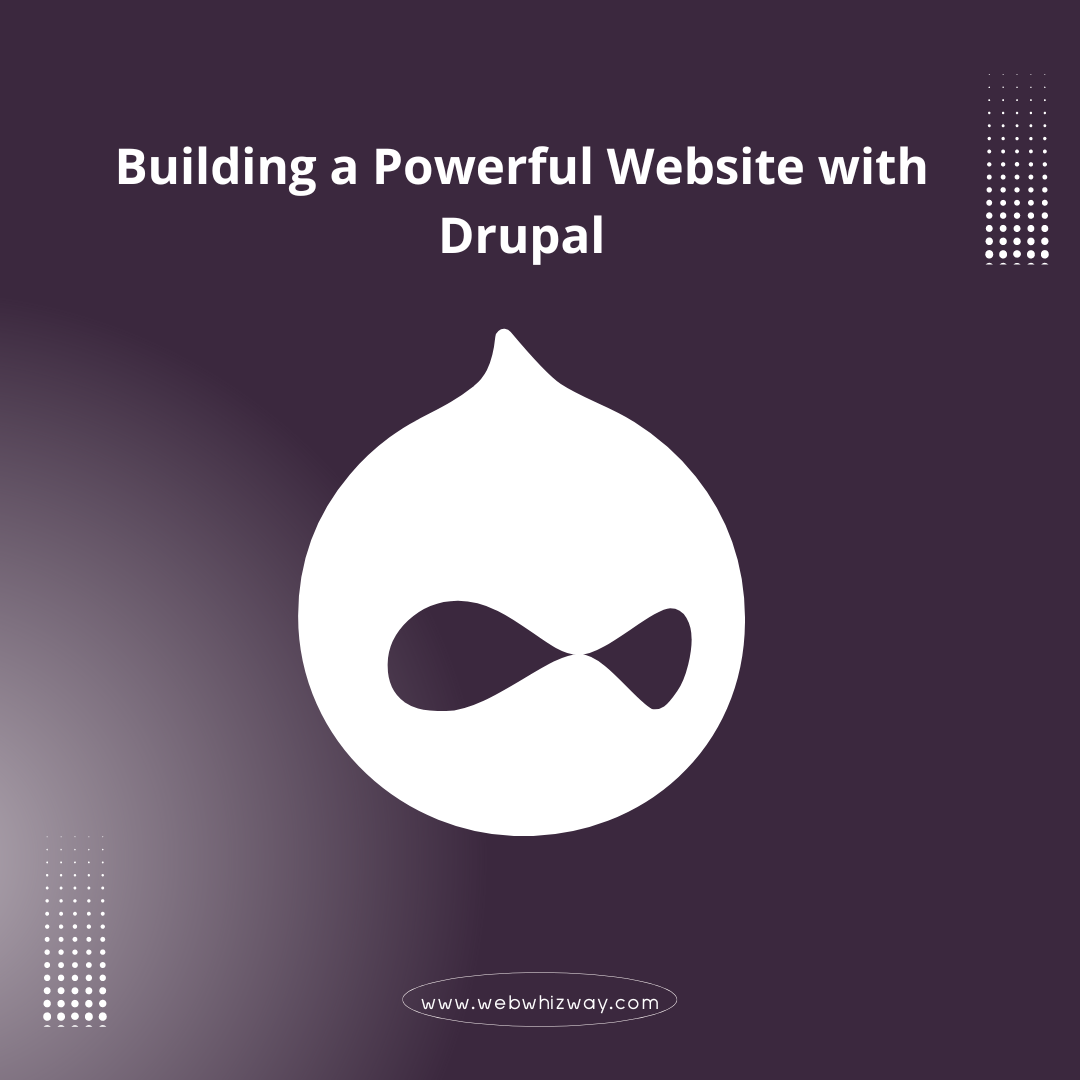Drupal is a robust and flexible content management system (CMS) used by millions of websites worldwide. Known for its scalability, security, and extensive customization options, it is a top choice for building everything from simple blogs to complex enterprise websites. This guide will walk you through the process of creating a powerful website with Drupal, covering everything you need to know to get started.
What is Drupal?
Drupal is an open-source CMS that allows users to build and manage websites with ease. Unlike some other CMS platforms, it offers a high degree of flexibility, making it ideal for sites with complex content structures or advanced functionality requirements. With a large community of developers, it is continuously updated and improved, ensuring that it remains secure and up-to-date with the latest web technologies.
Why Choose Drupal for Your Website?
Choosing Drupal for your website offers several advantages:
1. Flexibility and Customization: Drupal provides extensive options for customization through modules and themes, allowing you to tailor your site to your exact needs.
2. Security: Drupal is known for its strong security features, making it a popular choice for government and enterprise websites.
3. Scalability: Whether you’re building a small blog or a large e-commerce site, Drupal can scale to meet your needs.
4. Community Support: With a large and active community, finding support, documentation, and modules is easy.
Setting Up Your Drupal Environment
Before you start building your website, you need to set up a development environment. Here’s what you need:
1. Web Hosting: Choose a web hosting provider that supports Drupal. Look for one that offers PHP, MySQL, or MariaDB, and has SSH access.
2. Domain Name: Register a domain name that reflects your brand or the purpose of your website.
3. Installing Drupal:
- Download the latest version of Drupal from the official website.
- Upload the files to your web hosting server using FTP or SSH.
- Create a MySQL database for Drupal.
- Run the installation script by navigating to your domain in a web browser and following the on-screen instructions.
Understanding the Drupal Interface
Once Drupal is installed, you’ll be greeted with the admin interface. Key sections include:
– Content: Manage your site’s content, including creating new pages, articles, and media.
– Structure: Customize your site’s structure by managing blocks, content types, and menus.
– Appearance: Change your site’s look and feel by installing and customizing themes.
– Extend: Add functionality to your site by installing modules.
– Configuration: Manage site settings, including performance, user permissions, and more.
Choosing and Installing a Theme
Themes control the visual appearance of your Drupal site. Here’s how to choose and install a theme:
1. Browse Themes: Visit the Drupal theme repository to find a theme that suits your needs.
2. Install the Theme: Download the theme and upload it to your Drupal site via the Appearance section.
3. Customize the Theme: Use the theme’s settings to customize colors, fonts, layouts, and more.
Adding and Managing Content
Drupal’s content management capabilities are one of its strongest features. Here’s how to create and manage content:
– Create Content Types: Define different content types, such as articles, pages, or products, each with its own fields and structure.
– Add Content: Use the Content section to create new content items, filling in the fields you’ve defined for each content type.
– Organize Content: Use taxonomies to categorize your content, making it easier for users to find related items.
– Use Blocks and Menus: Organize your content visually by placing blocks in different regions of your theme and creating menus for navigation.
Extending Functionality with Modules
Modules are plugins that extend the functionality of your site. Here’s how to use them:
– Browse Modules: Visit the Drupal module repository to find modules that add the features you need.
– Install Modules: Download and install modules through the Extend section of your site.
– Configure Modules: After installation, configure the module settings to suit your site’s needs.
Securing Your Drupal Site
Security is a top priority when managing a Drupal site. Here are some steps to ensure your site remains secure:
– Update Regularly: Always keep your Drupal core, modules, and themes up-to-date to protect against vulnerabilities.
– Use Strong Passwords: Enforce strong password policies for all user accounts, especially admin accounts.
– Backup Regularly: Set up regular backups of your site’s files and database to recover quickly in case of a breach.
– Install Security Modules: Use security-focused modules like Security Kit, CAPTCHA, and Two-Factor Authentication (2FA).
Optimizing Your Drupal Site for Performance
A fast website is crucial for user experience and search engine rankings. Here’s how to optimize your Drupal site:
1. Enable Caching: Use Drupal’s built-in caching features to reduce server load and speed up page load times.
2. Optimize Images: Compress images before uploading them to reduce file size without sacrificing quality.
3. Use a CDN: A Content Delivery Network (CDN) can speed up content delivery by serving it from servers closer to your users.
4. Minify CSS and JavaScript: Reduce the size of your site’s CSS and JavaScript files by minifying them.
Launching and Maintaining Your Drupal Site
Once your site is built, it’s time to go live:
– Test Your Site: Before launching, test your site thoroughly for broken links, missing content, and performance issues.
– Go Live: Point your domain to your web hosting server and make your site live.
– Monitor and Maintain: Regularly monitor your site’s performance, security, and content to keep it running smoothly.
Conclusion
Creating a website with Drupal may seem complex at first, but with its extensive features and flexibility, the platform offers limitless possibilities. Whether you’re a beginner or an experienced developer, it provides the tools you need to build a powerful, secure, and scalable website. By following this guide, you’ll be well on your way to launching a successful site.
